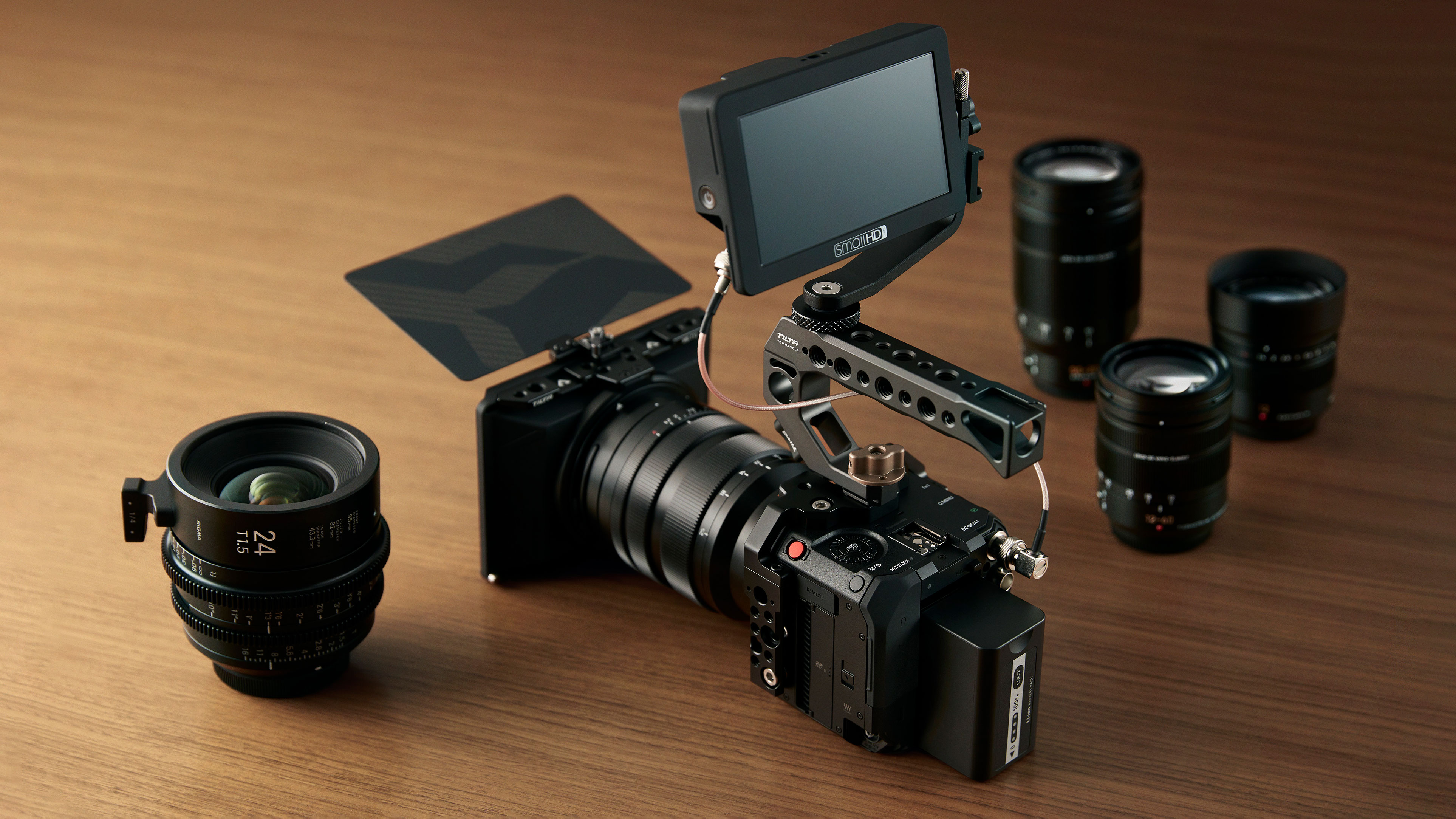Panasonic BGH1 looks nothing like any Lumix you’ve seen
The ‘box’ styling of the Panasonic Lumix BGH1 is designed for modular filmmaking gear and built around a 10MP MFT sensor

Anyone worried that Panasonic might desert its Micro Four Thirds heritage should stop worrying now. The Lumix BGH1 is designed for filmmaking rather that stills photography, but demonstrates Panasonic’s faith in the Micro Four Thirds system.
Panasonic says the BGH1 brings together technologies from its professional cine cameras and Lumix mirrorless models into an expandable camera that can be used in multi-camera setups, on drones, for IP remote control and for streaming.
It's reminiscent of box-shaped Sigma fp, though the Sigma is a more 'complete' camera that simply requires a lens, where the BGH1 is much more 'modular' and requires accessories to make it usable. It is also closely resembles the Blackmagic Design Micro Cinema Camera from 2015 - which also uses the Micro Four Thirds lenses.
Lumix BGH1 features and specifications
The Lumix BGH1 is designed around a 10.2MP Live MOS sensor with Dual Native ISO technology and a maximum sensitivity of ISO 51,200, which sounds a lot like the sensor in the more conventionally-shaped Lumix GH5S, a video-centric variant of the ever-popular Lumix GH5.
The BGH1 can capture C4K/4K 60p video at 4:2:0 10-bit internally with Hybrid Log Gamma (HLG) option and V-Log L to offer 13 stops of dynamic range. If you connect an external recorder via HDMI, you can use 4:2:2 color too.
Heat build up and recording times have been a contentious topic recently, but Panasonic says the Lumix BGH1 has a new heat dispersion structure that allows unlimited recording. The box-shaped body is made of aluminium and magnesium alloy.
The Lumix BGH1 is designed for use both as a standalone camera and in multi-camera or remote control set-ups. It complies with ‘Power over Ethernet+ (PoE+)’ protocols, and Panasonic’s LUMIX Tether for Multicam PC software can control up to 12 of these cameras at a time. Live IP streaming will be possible via a future firmware update.
The best camera deals, reviews, product advice, and unmissable photography news, direct to your inbox!
Connectors include USB 3.1 Type-C, 3G-SDI and HDMI Type A. Internal storage is via two SD card slots.

Panasonic Lumix BGH1 price and availability
The Lumix BGH1 will be available from November 2020 at a price of $1,997.99/£1,899.99/AU$3,099.
• Pre-order the Panasonic Lumix BGH1 at B&H Photo (US)
• Pre-order the Panasonic Lumix BGH1 at Park Cameras (UK)
Read more:
• Best 4K cameras
• Best cine cameras
• Best Panasonic cameras
• Panasonic GH5S review
• Sigma fp review

Rod is an independent photography journalist and editor, and a long-standing Digital Camera World contributor, having previously worked as DCW's Group Reviews editor. Before that he has been technique editor on N-Photo, Head of Testing for the photography division and Camera Channel editor on TechRadar, as well as contributing to many other publications. He has been writing about photography technique, photo editing and digital cameras since they first appeared, and before that began his career writing about film photography. He has used and reviewed practically every interchangeable lens camera launched in the past 20 years, from entry-level DSLRs to medium format cameras, together with lenses, tripods, gimbals, light meters, camera bags and more. Rod has his own camera gear blog at fotovolo.com but also writes about photo-editing applications and techniques at lifeafterphotoshop.com



